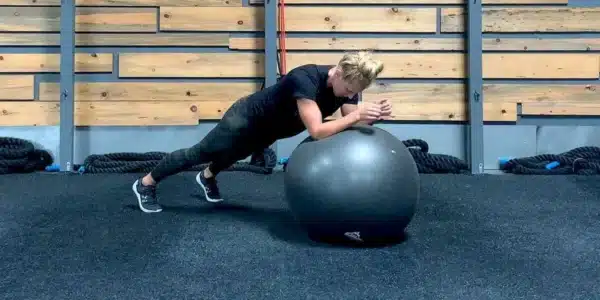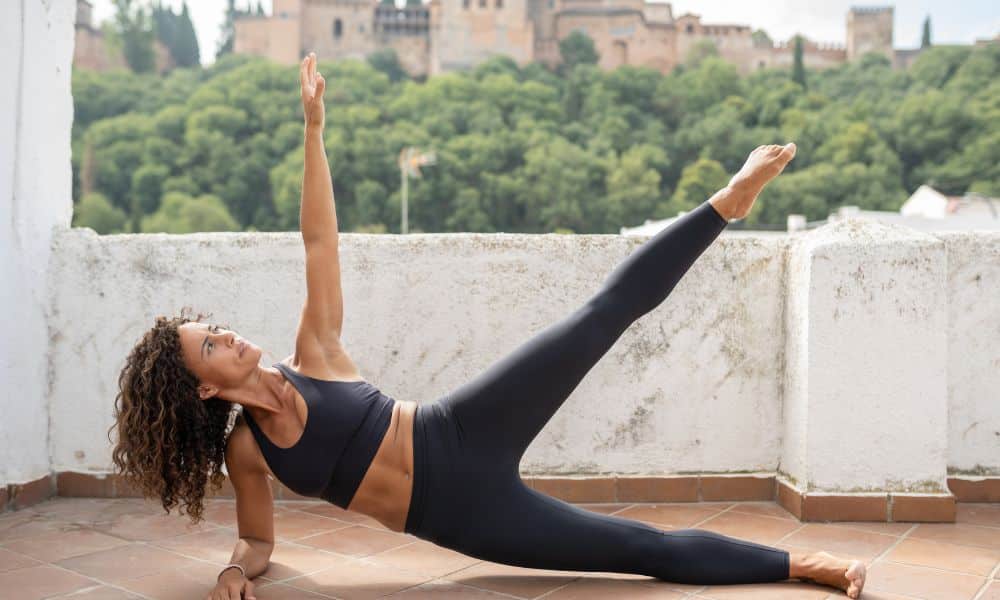How does an Isometric home workout help you reach your goals faster? You have knowingly or unknowingly done isometric exercises before. We mention it at the beginning of the article because prayer is one isometric exercise where you have to press both hands together as hard as possible for a minimum of 10 seconds. You rarely feel pressure because you do it in a concise time frame. But if you do it for at least 30 seconds, you’ll experience bearable tension in your chest and arm. After that, however, your arms won’t move at all. It will be in a static position; we said that prayer is an isometric exercise.

Holding a plank is another isometric exercise you are probably familiar with. However, maintaining a plank is not much easier for beginners because you’ve to hold your plank while your muscles contract. In this posture, your muscle fibers get activated because the same amount of force is acting against each other, and there will be no place for change or movement. In this article, we will mention seven important isometric exercises, but before that, we would like to discuss the significant advantages of isometric exercises.
Benefits of an Isometric Home Workout
Research has discovered a range of health benefits of isometric exercise. For example, a meta-analysis of 2016 has found that an eight-week isometric exercise successfully reduces blood pressure levels. A recent report showed that more established grown-ups had a higher aggravation limit after isometric activities. Also, assuming you’re into group activities, there’s uplifting news: A 2016 examination survey reasoned that lower-body isometric exercises further developed bounce stature and kicking capacity in soccer players.
In the maximum isometric exercise, you don’t require any equipment. You can perform isometric exercises while relaxing in your bed or watching Netflix. If you tire of heavy lifting, do light exercises, including isometric exercises for your forearm, heart muscles, and nerves.
Seven Effective Isometric Exercises You Can Do for a Home Workout
1. Bent-over press against a wall
The muscle involved: Shoulders
Start with a low lunge position. Next, place both hands on the wall at your chest height. Then lean onto the wall and push with your total energy. Then gradually bend to target your shoulders. The more you remain upright, the exercise will target your chest.
Expert tips: Before starting this exercise, completely relax your body and mind. Breathe properly throughout the workout.
2. Prayer Pose
The muscle involved: Chest
Place both of your palms together. It would be best if you point your elbows out towards the floor. Press both of your hands together and press as tightly as possible.
Expert tips: Keep your shoulder level up -while you push that, develop a necessary strain
3. High plank
The muscle involved: core muscle and back muscle
Just hold in a push-up position, keeping your spine straight. Next, make a reasonable distance from the floor. Then broaden your chest. Thus, your core will be significantly engaged. Also, breathe deeply.
Expert tips: Do not lift your butt too high or drop them too low in this posture.
4. Self-harm wrestling
The muscle involved: biceps and triceps
Twist your right arm at a 90-degree angle. Hold your right hand with your left hand. Push them together as hard as possible. Use your right biceps to keep your arm from dropping with your left triceps arm muscles, and attempt to push your right arm down. Rehash is on the opposite side.
Pro tips: Beginners even do wrong with their upper body during exercise. Please relax your shoulder, don’t give them unnecessary stress.
5. Triceps extension against the wall
The muscle worked the triceps.
Get into a lunge position with your fist on the wall at your head level. Then use your triceps to push your fist into the wall.
Pro tip: Do not tense your shoulders in this exercise, and continue to breathe deeply.
6. Forearm Plank
The muscle involved: abs
Start with your forearm plank position. Keep your spine straight, then tighten your abs as much as possible. Of course, hold this position. Thus, contracting your abs gives you the extra advantage of strengthening your core.
Pro tips: Do not let your butt fall or lift too high. Keep your shoulders, knees, and ankles in a straight line.
7. Low Squat
The muscle involved: Glutes, adductors, quads
Start by standing with your feet at your shoulder-width apart. Next, squat so that your thighs remain parallel to the floor. Do not just hold the position. Instead, try to squeeze both of your feet together. This condition will force you to engage your inner thigh muscles. As a result, they will tighten even more.
Expert tips: One prevalent mistake by beginners is they perform this workout by not sitting back far enough. To rectify it, prevent your knees from going over your toes.
The last word on seven exercises you can perform with an isometric home workout
These isometric exercises are excellent for your health. For example, meta-analysis has proved the consequence of isometric exercises for high blood pressure is positive.
Thus, you must include them in your workout if you look to improve your overall health. Finally, isometric exercises provide you with less joint stress and exercise you can perform when you are looking to take a break from more rigorous workouts.




